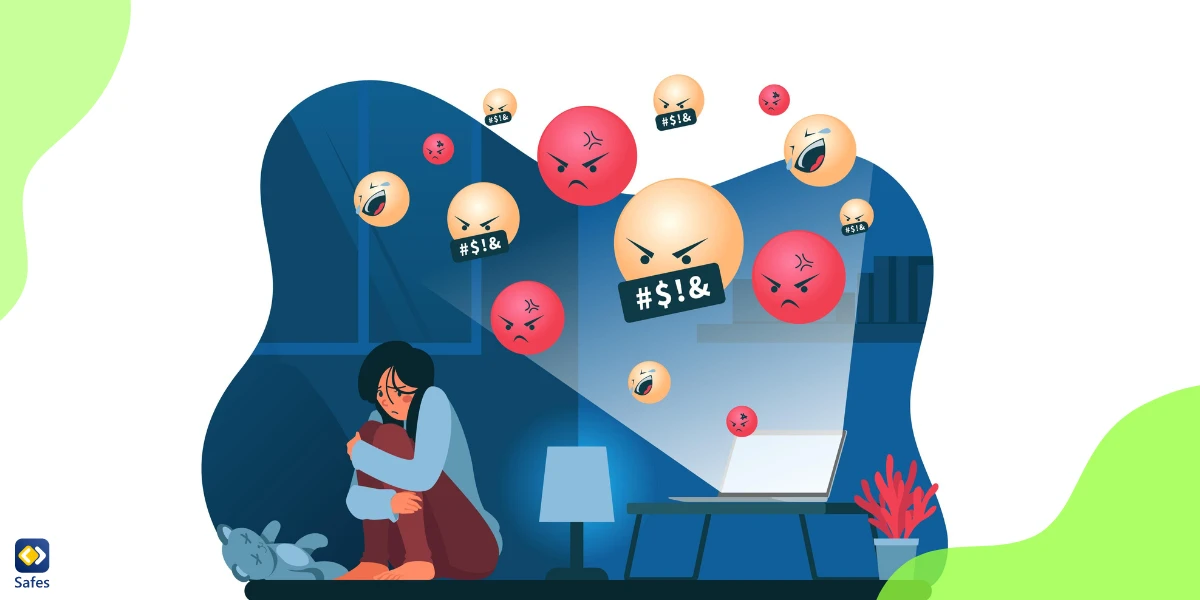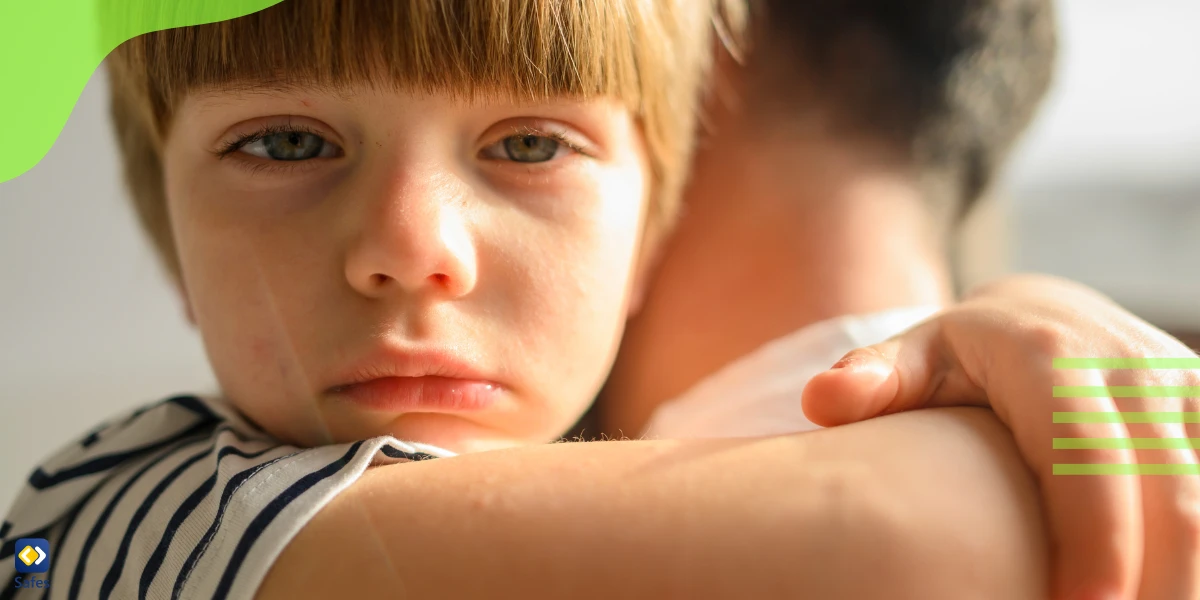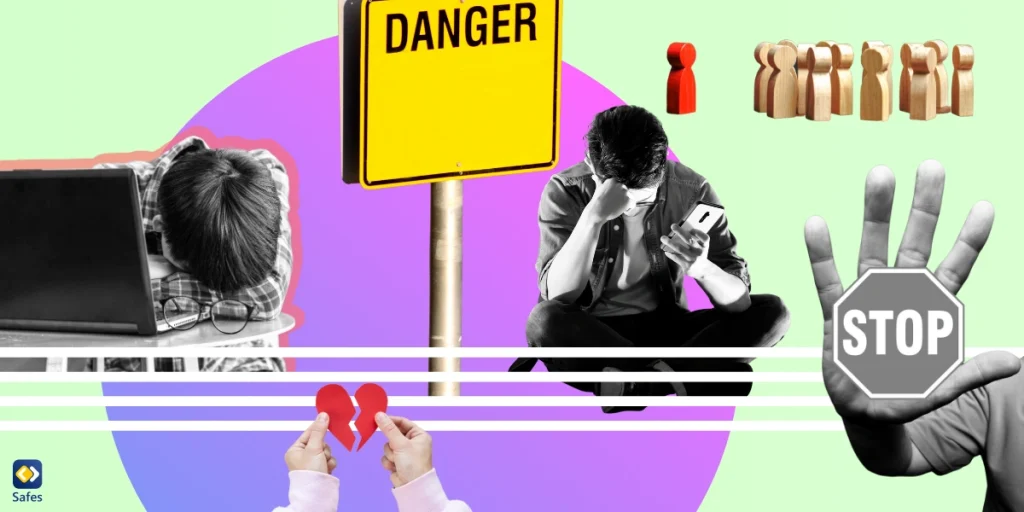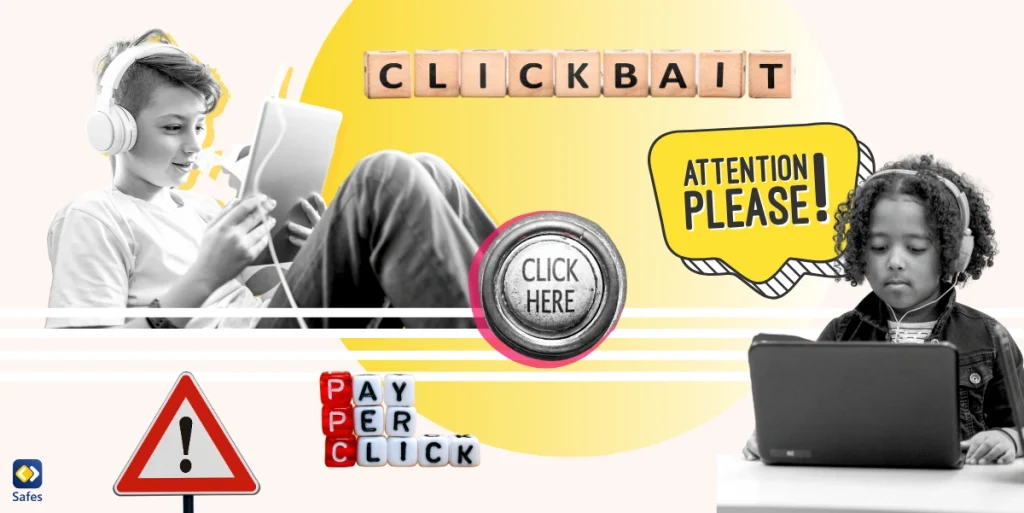In our digitally transformed world, children and young people are increasingly exposed to the Internet and its diverse platforms from an early age. Unfortunately, while the Internet is a beneficial tool that has revolutionized communication and access to knowledge, it has spawned new types of intimidation and bullying. Online harassment or cyber harassment is a burgeoning problem that deeply troubles us all as it has a significant impact on a child’s mental health and overall happiness. This comprehensive guide highlights the characteristics of cyber harassment, ways to identify warning signs, the common platforms used for such bullying, parental involvement and prevention strategies, methods of responding to online harassment incidents, building your child’s resilience and a useful compilation of resources and tools for parents.
Download and Start Your Free Trial of the Safes Parental Control App
Understand cyber harassment
In the digital space, the specter of cyber harassment, or what many know as online bullying, hovers far apart. It is the dark side of technology where people use online platforms to humiliate, terrify or even torment others. Examples abound — from spreading harmful rumours, sharing explicit material non-consensually, direct verbal attacks, threats of physical violence, relentless online stalking, to the dangerous act of revealing someone’s private information without permission, what often referred to as „doxing “ or „revenge porn“.
Unfortunately, any device that can connect to the internet, be it your handheld smartphone, laptop, tablet or even a gaming console, can serve as a stage for these malicious acts. The consequences can be severe, often leading to anxiety, depression and even stress-related health problems.
From a legal perspective, the definition of cyber harassment can vary from region to region, but it is usually recognized as a criminal act. There are several laws, e.g. B. against harassment, stalking and identity theft, which can be used to bring the perpetrators to justice. It is important that you are familiar with the relevant laws in your area. In the unfortunate event that your child becomes a victim of online bullying, it is absolutely essential to take the right legal action.

Spot signs of cyber harassment
Navigating the murky waters of cyber harassment can be a tough job, especially when kids remain silent about it or don’t even realize they’re caught in their maelstrom. But hey, there are telltale signs parents can brace for. Do you notice that your child is more than usual holed up in their room, silent about their online activities, or staying away from school or social issues ? Are your grades going down or do you have a change in your mood , behavior, or sleeping patternsor found out about their eating habits? And what if they suddenly want to turn off their computer or gadget? When one of those red flags flaps in the wind, it’s time to face the music, sit down with your child, and tackle the problem head-on.
Popular platforms and cyber harassment
In the digital age, no platform is safe from cyber harassment. From the busy social media avenues of Facebook, Instagram, and Twitter to the private messaging corners of WhatsApp and Snapchat, these platforms are often abused for harmful activities like cyber harassment. This is mainly due to the anonymity and ease of creating fake profiles.
Messaging apps with their disappearing messages feature provide a convenient way for harassers as there is no record of their inappropriate behavior.
The world of online gaming is not spared either. In-game chats can become a battlefield where players are bullied and harassed. In extreme cases, this virtual harassment has even spilled over into the real world, leading to physical violence.
Parent involvement and prevention
We believe parents are the first line of defense against cyberbullying . It’s important to have an open dialogue with your child about safe web browsing, coupled with clearly defined rules and boundaries for their online interaction. Keeping track of their digital footprints and understanding the platforms they frequent is a must.
Equally important is instilling in them the risk involved in exposing personal information online and the proper way to deal with and report online intimidation. We must promote digital respect and encourage parents to foster this attitude in their children and encourage them to report any cyberbullying they encounter.
Parents working with school boards can lead to effective policies and procedures to combat cyberbullying while raising wider awareness of this pressing issue.
Responding to Cyber Harassment Incidents
In the unfortunate event that your child experiences cyberbullying , taking swift action is of the utmost importance. Start with an open conversation with your child that provides a safe space of reassurance and support. Make it clear that they are not at fault and that you are committed to tackling this issue together.
Als Erziehungsberechtigte liegt es in Ihrer Verantwortung, solche Fälle von Cybermobbing den zuständigen Behörden zur Kenntnis zu bringen, sei es die Schule Ihres Kindes, Ihr Internetdienstanbieter oder sogar die Strafverfolgungsbehörden. Denken Sie daran, schädliche Nachrichten, Bilder oder Texte zu dokumentieren, da diese als wichtige Beweisstücke dienen könnten. Zögern Sie nicht, die Hilfe eines professionellen Therapeuten oder Beraters in Anspruch zu nehmen, um in dieser herausfordernden Zeit durch die emotionale Landschaft Ihres Kindes zu navigieren.

Unterstützen und stärken Sie Ihr Kind
Es ist absolut wichtig, Ihr Kind im unglücklichen Fall von Online-Mobbing zu stärken und aufzurichten. Entfachen Sie mit Ihrem Kind offenherzige Gespräche über seine Gefühle und stellen Sie sicher, dass es weiß, dass Sie sein unerschütterlicher Verbündeter sind. Unterstützen Sie Ihr Kind bei der Kultivierung von Resilienztaktiken und klären Sie es über die richtigen Reaktionen auf Online-Belästigungsfälle auf. Ebenso ist es wichtig, das emotionale Wohlbefinden Ihres Kindes genau im Auge zu behalten, und zögern Sie nicht, sich bei Bedarf an Fachleute für psychische Gesundheit zu wenden.
Hilfsmittel und Hilfsmittel für Eltern
Es gibt viele Ressourcen und Tools, die Eltern helfen, mit Cyber-Belästigung umzugehen. Stopbullying.gov ist eine hervorragende Quelle für Informationen über Cyber-Belästigung und wie man sie verhindern kann. Common Sense Media und NetSmartz sind auch großartige Ressourcen für Eltern und bieten Tipps und Tools, um Kinder online zu schützen.
Es gibt auch Kindersicherungs-Apps wie Safes, mit denen Sie die Internetaktivitäten Ihres Kindes überwachen und die Gerätenutzung einschränken können. Die Safes-App kann der digitale Erziehungsberechtigte Ihres Kindes sein und die Online-Umgebung Ihres Kindes proaktiv schützen. Mit Safes haben Sie die Möglichkeit, die Online-Aktivitäten Ihres Kindes zu überwachen, potenzielle Mobber zu identifizieren und sogar schädliche Inhalte abzufangen, bevor sie Ihr Kind erreichen. Die App arbeitet unermüdlich, scannt In-App-Spielgespräche, Interaktionen in sozialen Medien und vieles mehr, um sicherzustellen, dass das Engagement Ihres Kindes gesund und positiv bleibt. Die Safes Kindersicherungs-App ist nicht nur ein Werkzeug, sondern eine Verpflichtung, Online-Belästigung zu verhindern und die digitale Welt zu einem sichereren Ort für unsere Kinder zu machen.
Safes ist auf allen Android-, iOS-, Windows- und Mac-Geräten verfügbar. Um zu erfahren, wie Sie die Kindersicherung auf jeder dieser Plattformen mithilfe von Safes einrichten können, folgen Sie den folgenden Links:
Cyber-Belästigung: Fazit
Digital intimidation is a serious problem with a significant impact on a child’s emotional stability and overall well-being. As a parent, understanding the concept of digital bullying, recognizing the indicators, and knowing how to respond when your child is a victim is of paramount importance. Taking preventative measures against digital bullying while empowering and empowering your child is a powerful strategy to keep them safe in the online universe.
Your Child’s Online Safety Starts Here
Every parent today needs a solution to manage screen time and keep their child safe online.
Without the right tools, digital risks and excessive screen time can impact children's well-being. Safes helps parents set healthy boundaries, monitor activity, and protect kids from online dangers—all with an easy-to-use app.
Take control of your child’s digital world. Learn more about Safes or download the app to start your free trial today!


![Enthüllung des Rätsels: Eigenschaften des mittleren Kindes enthüllt] [Stereotypen brechen: Mythen über mittlere Kinder entlarven](https://www.safes.so/wp-content/uploads/2023/08/Middle-Child-Traits-1024x513.webp)

